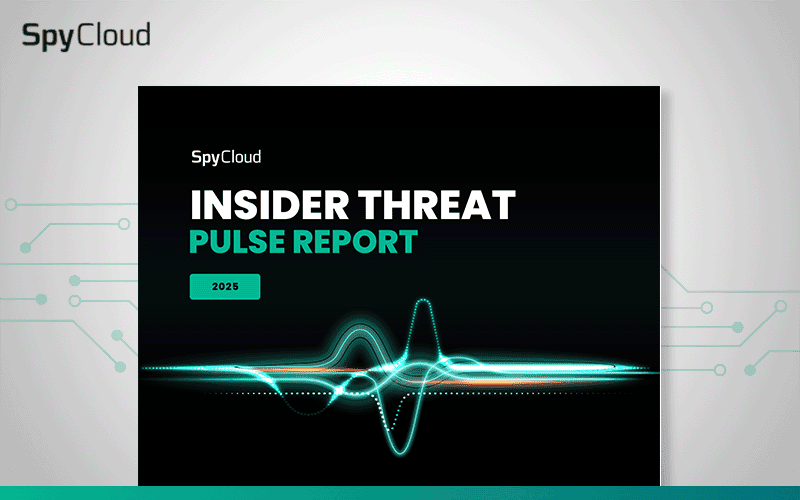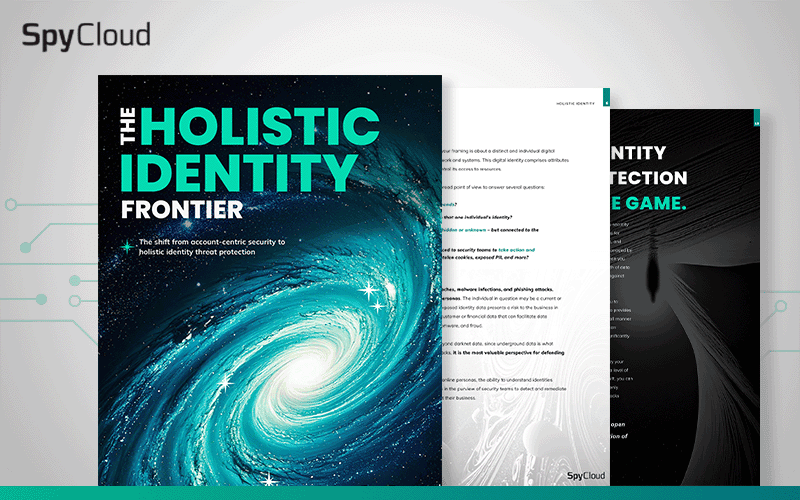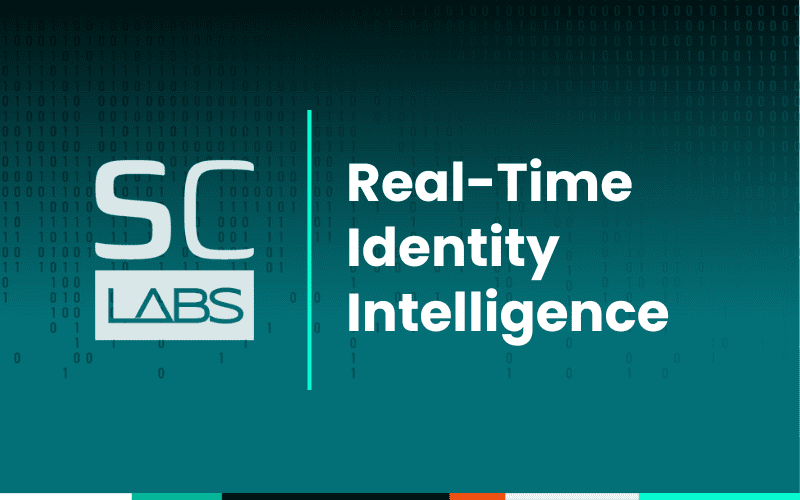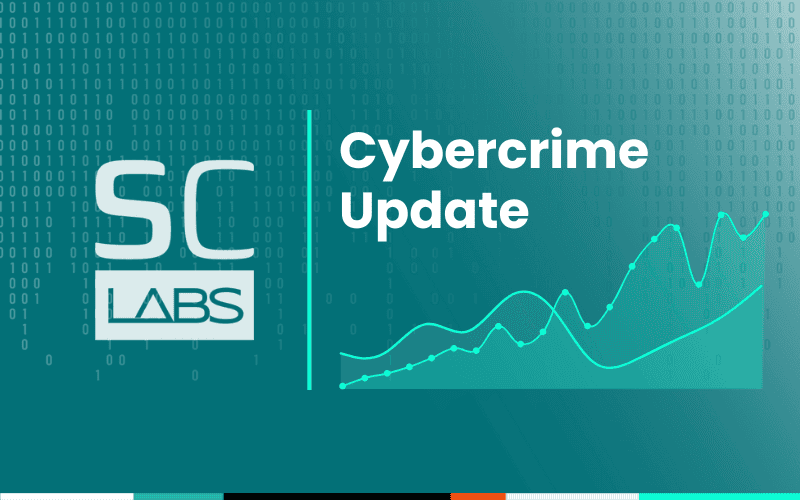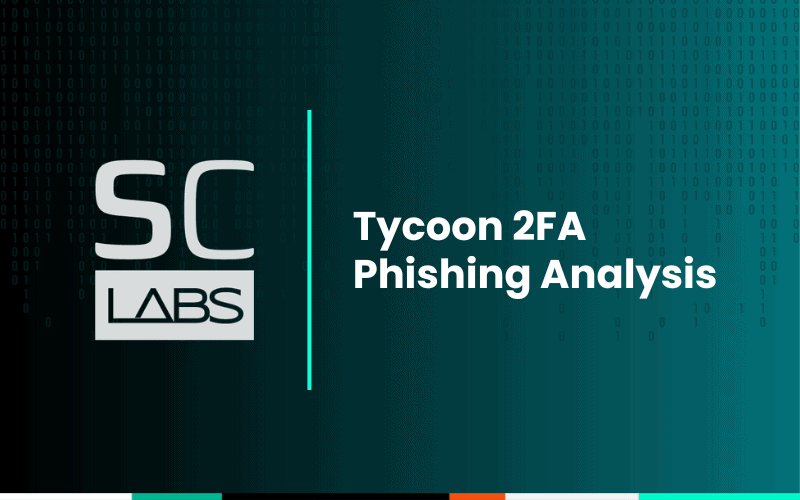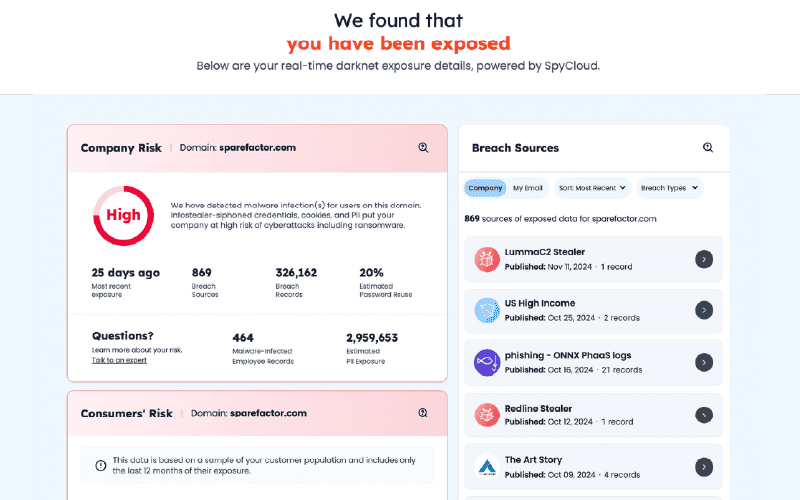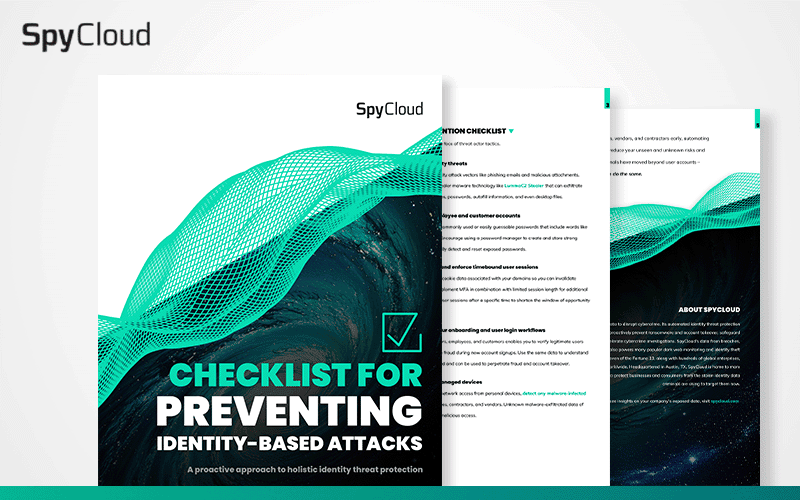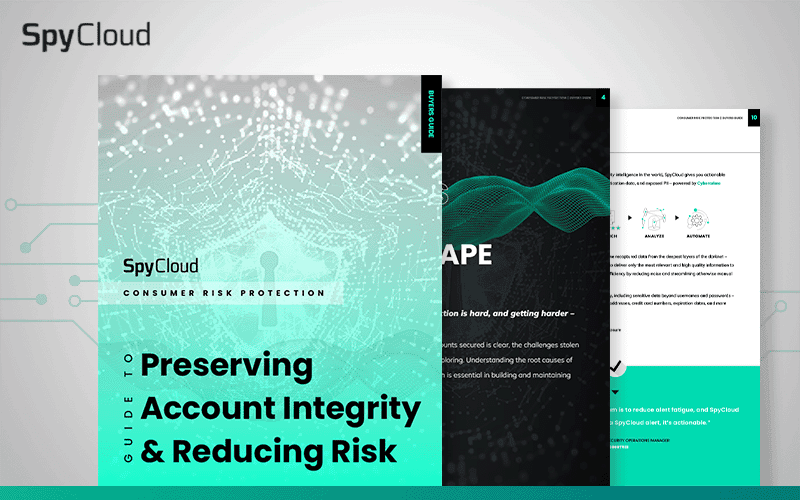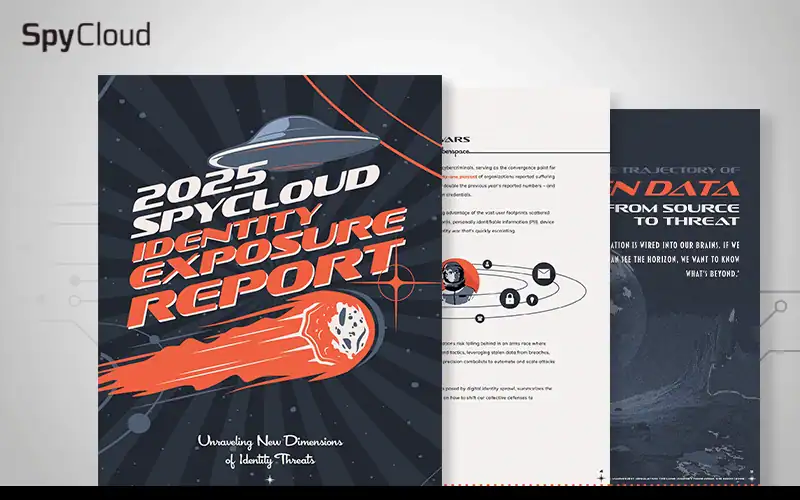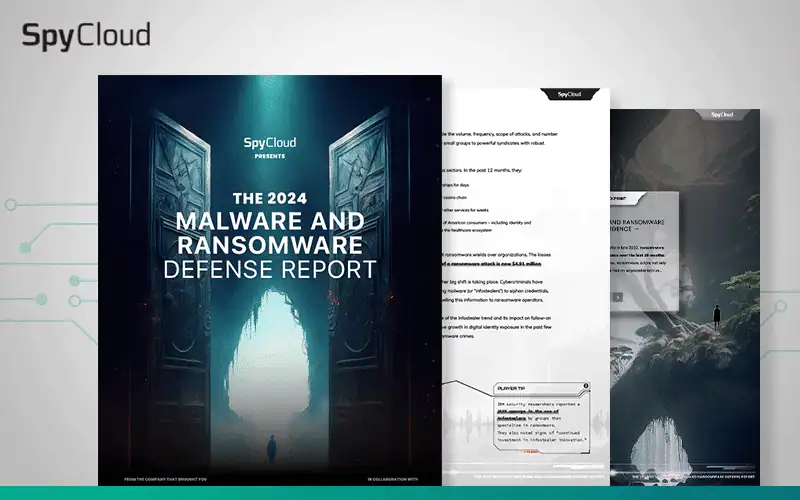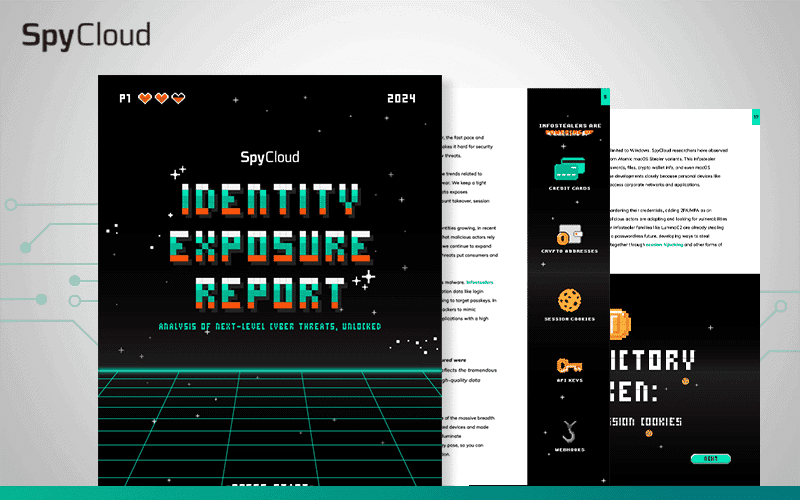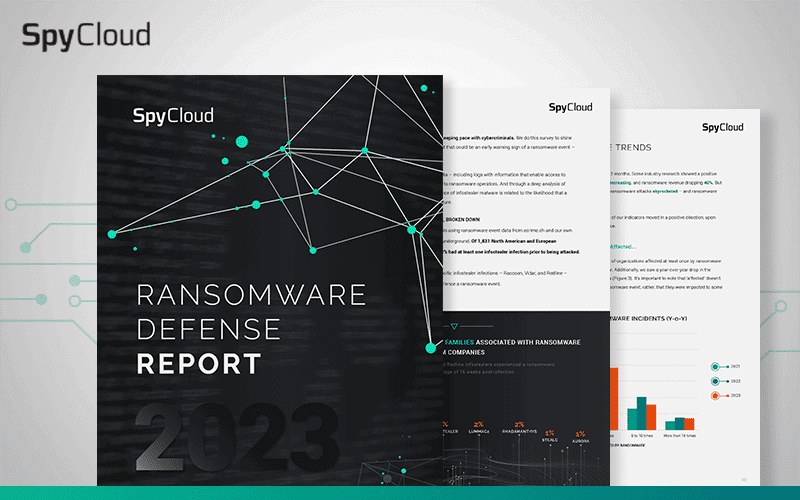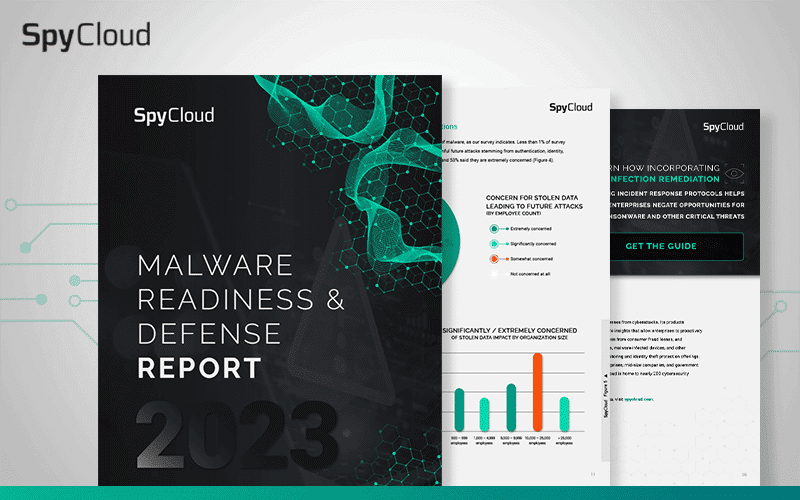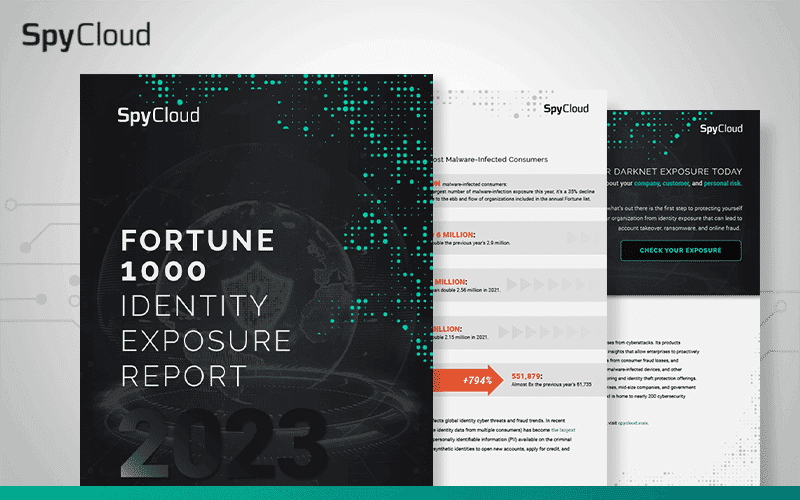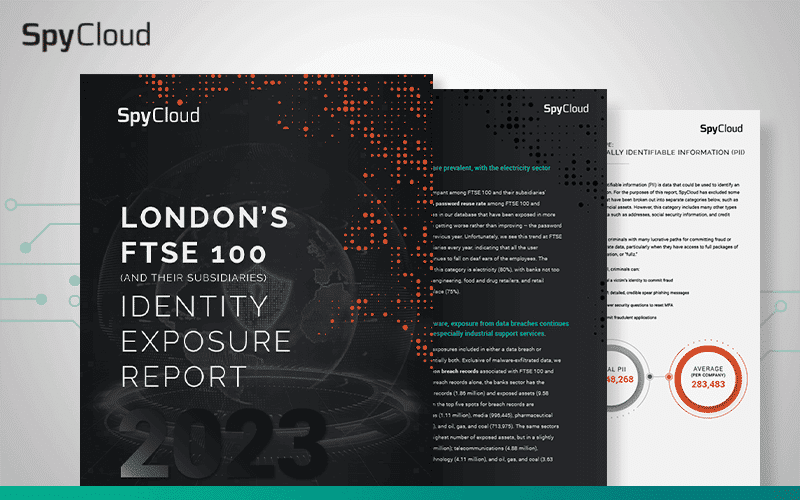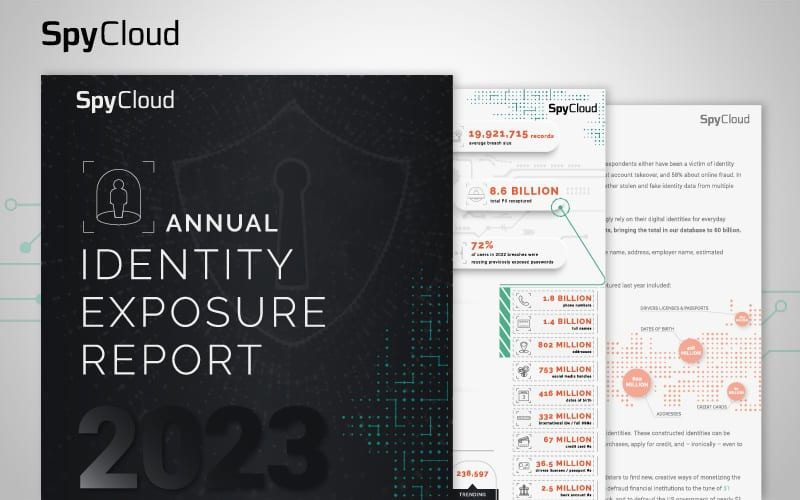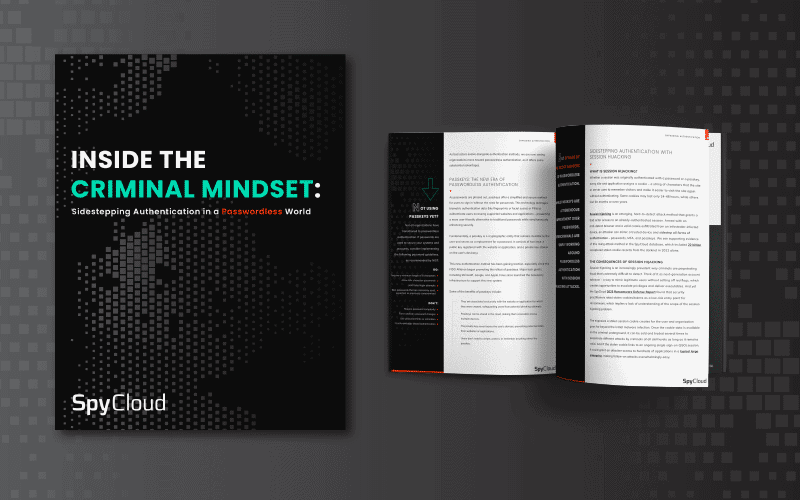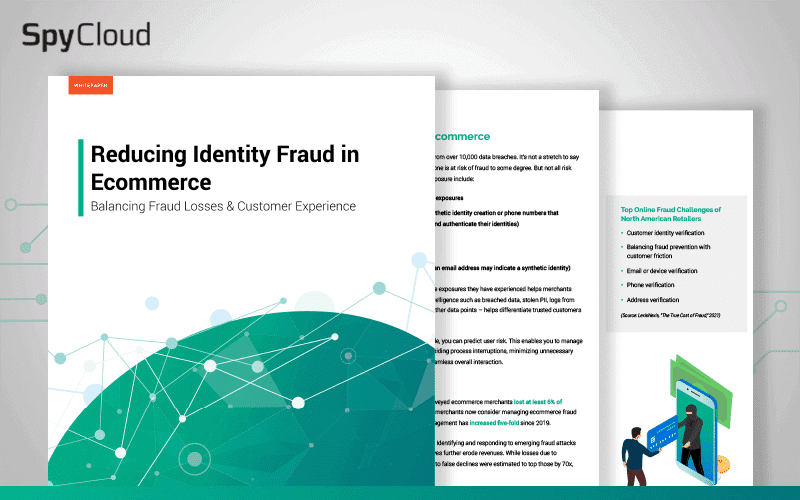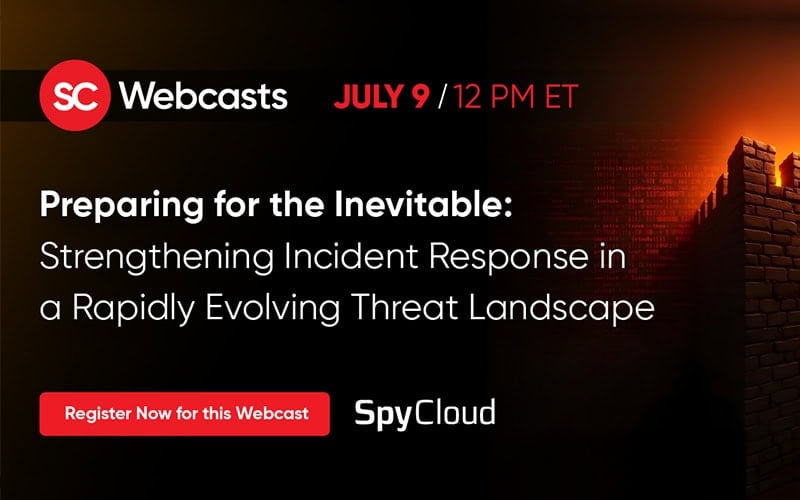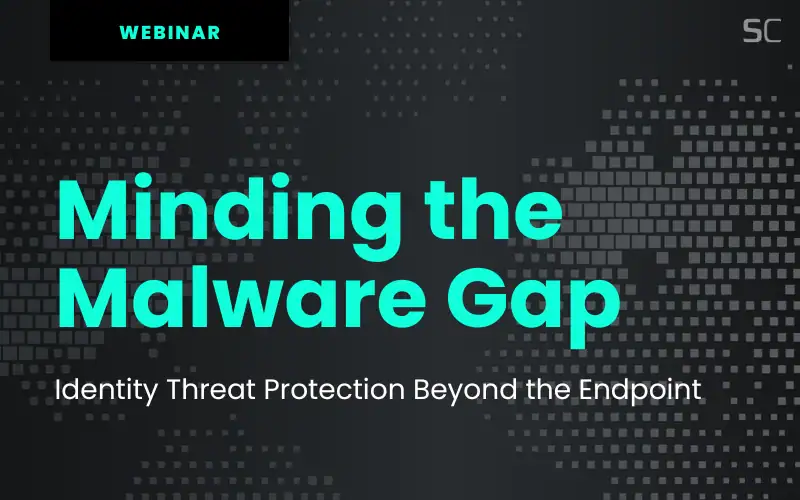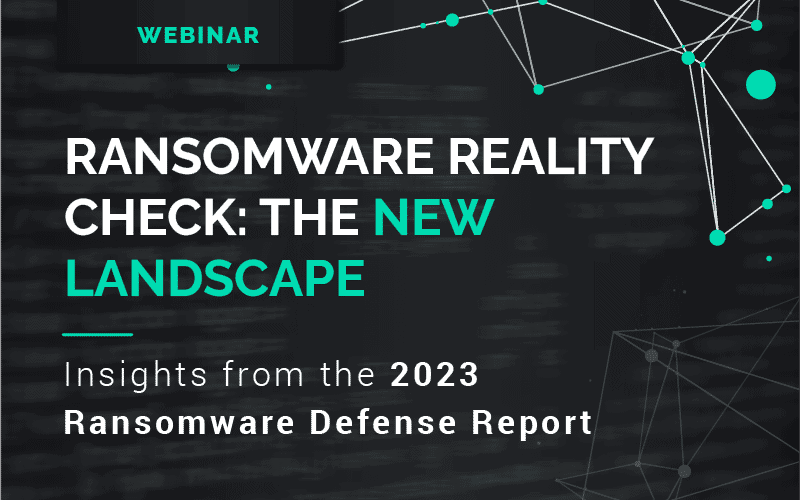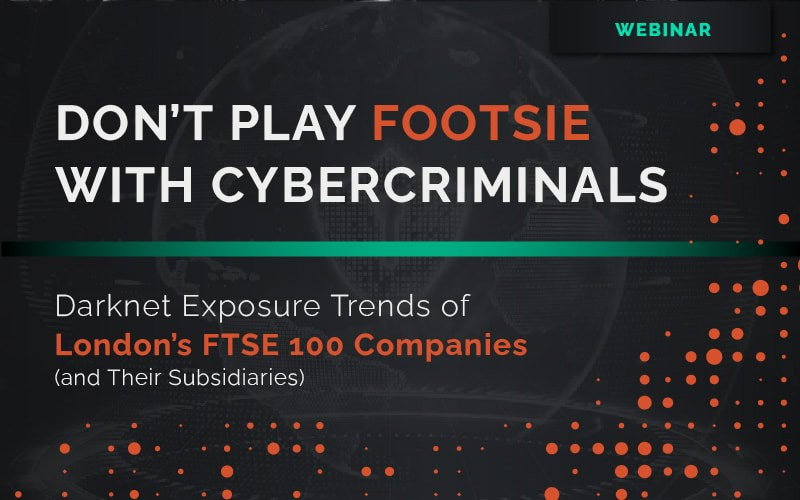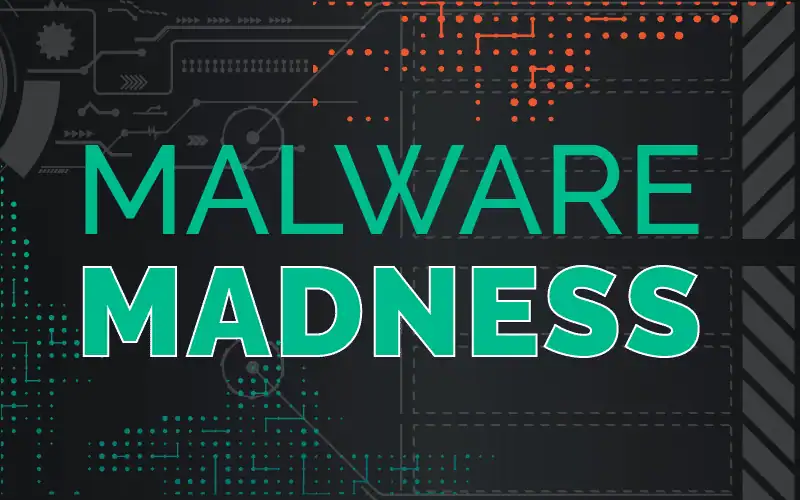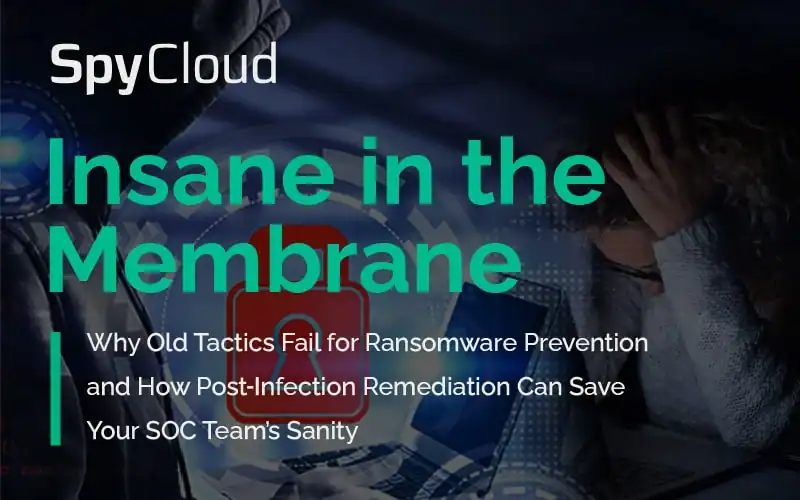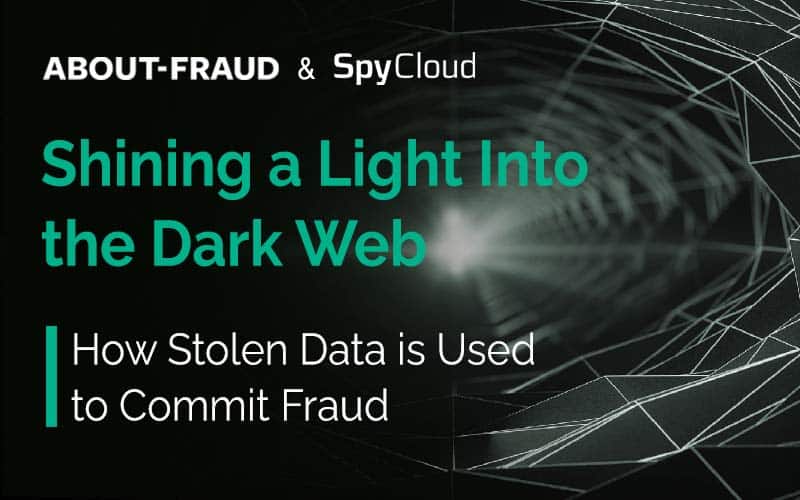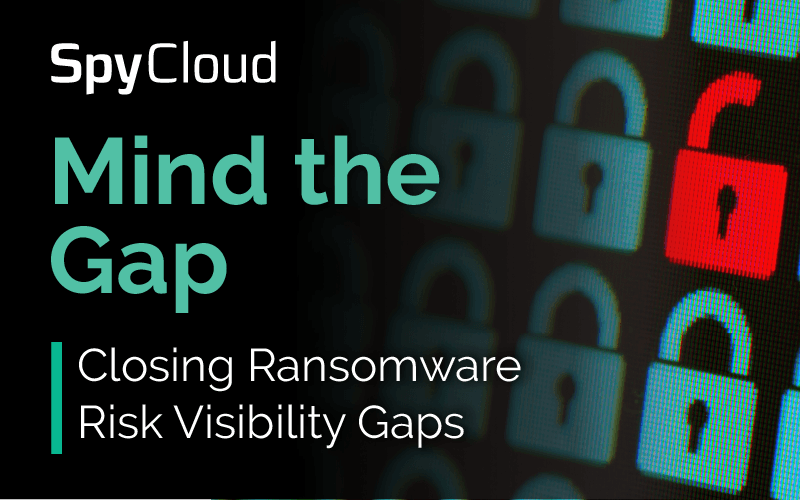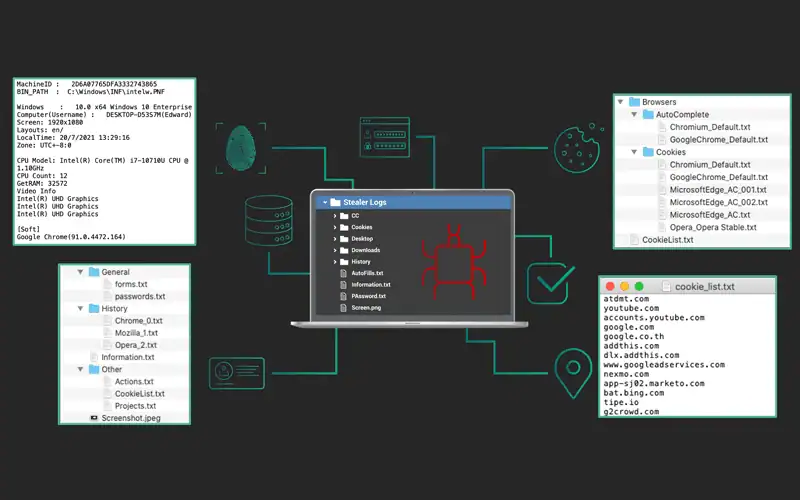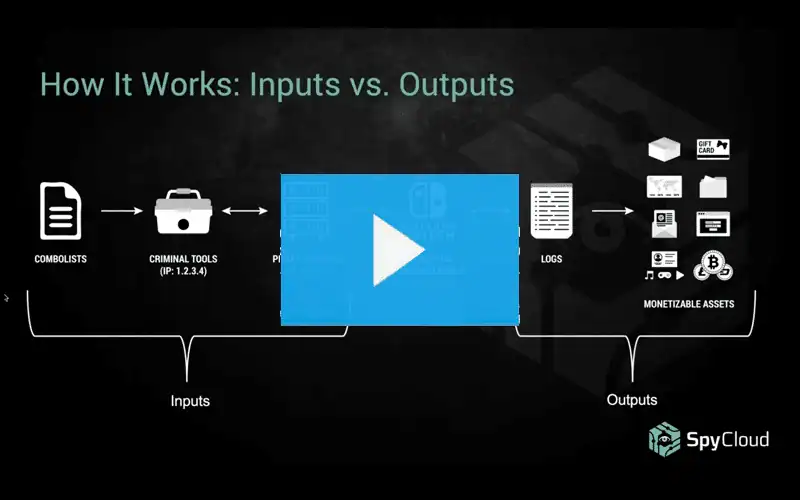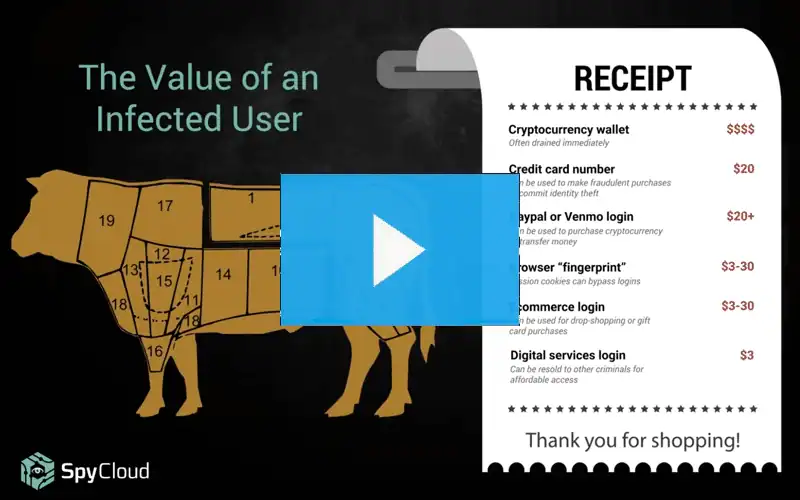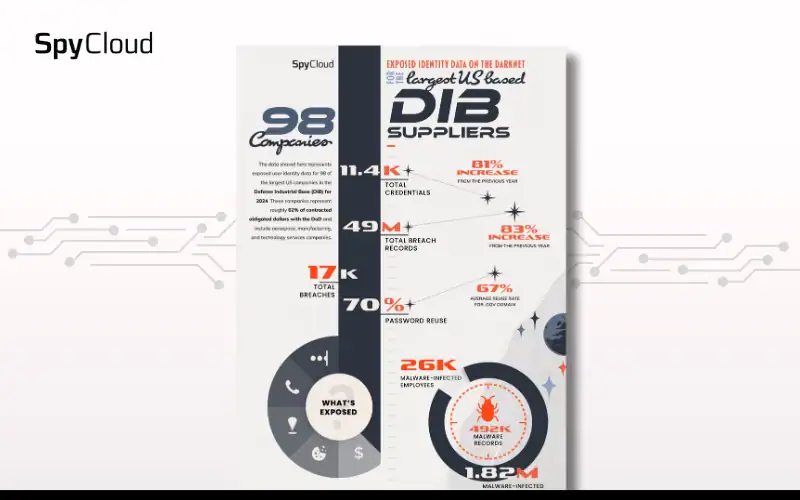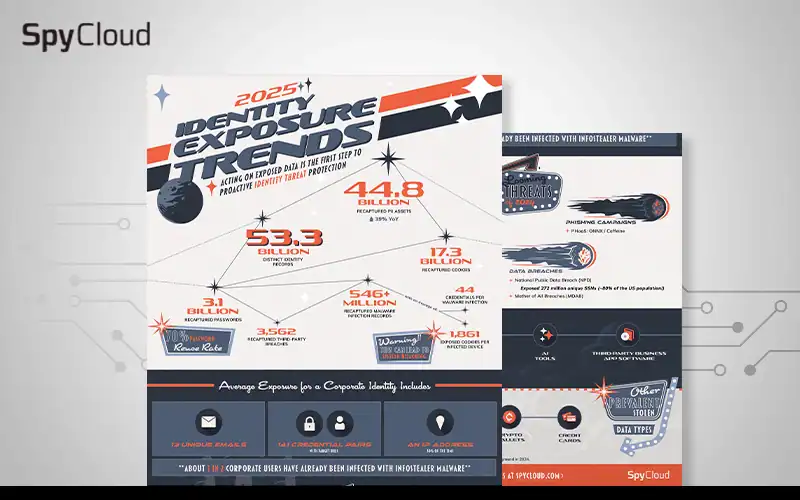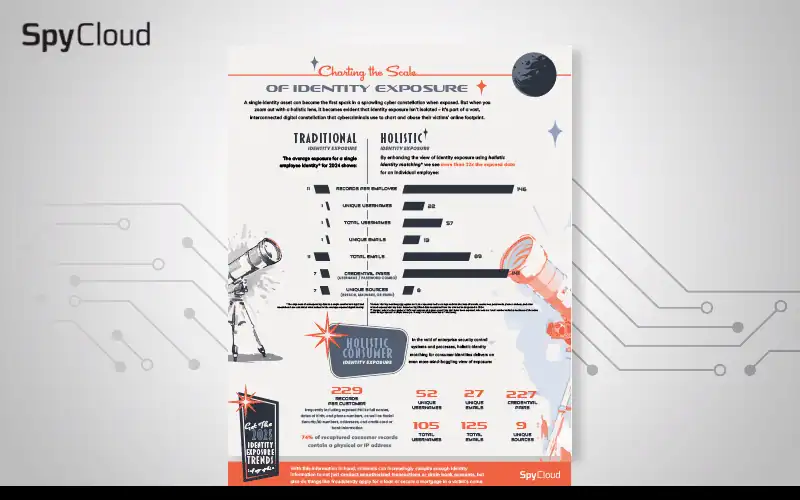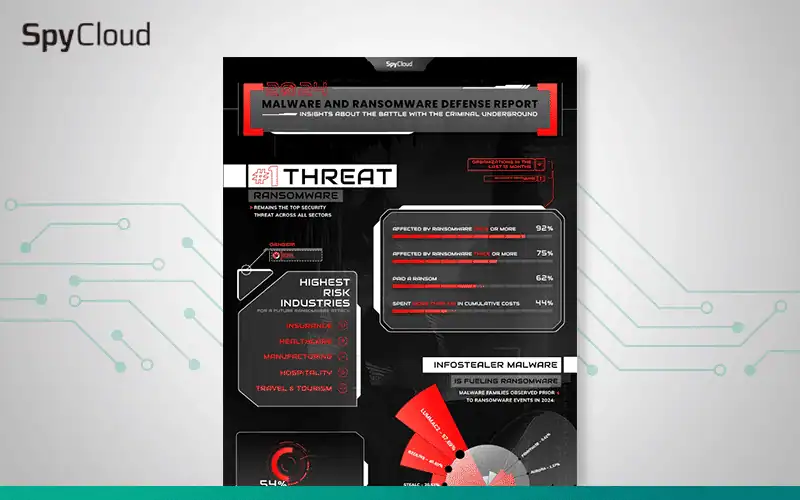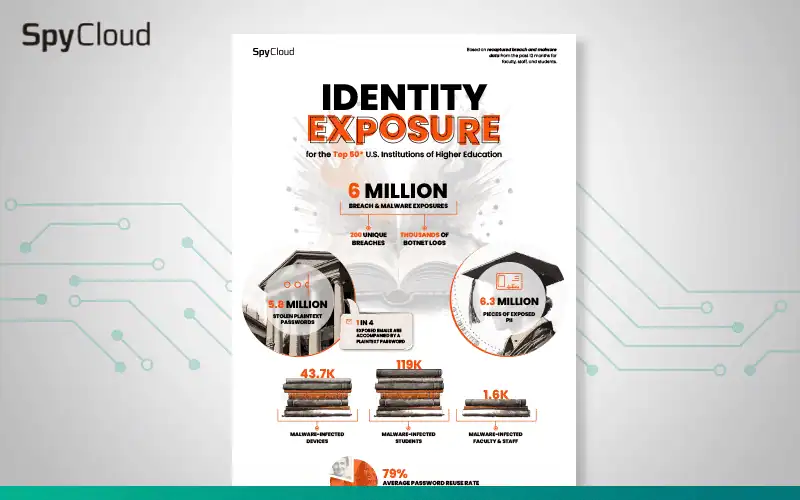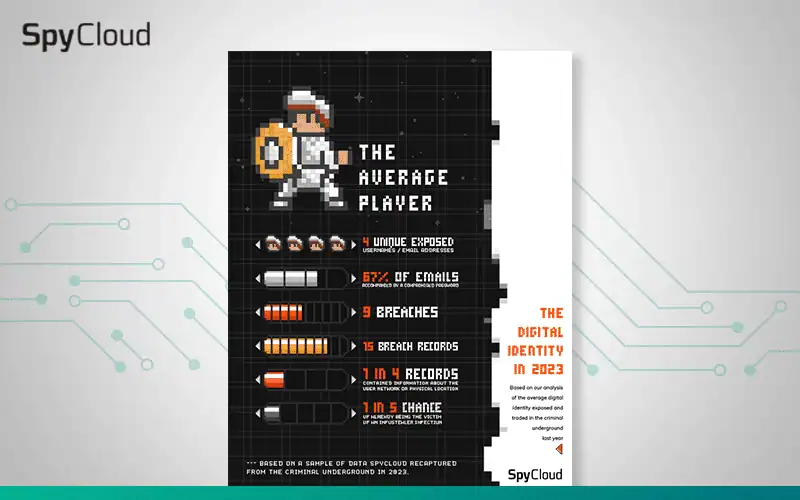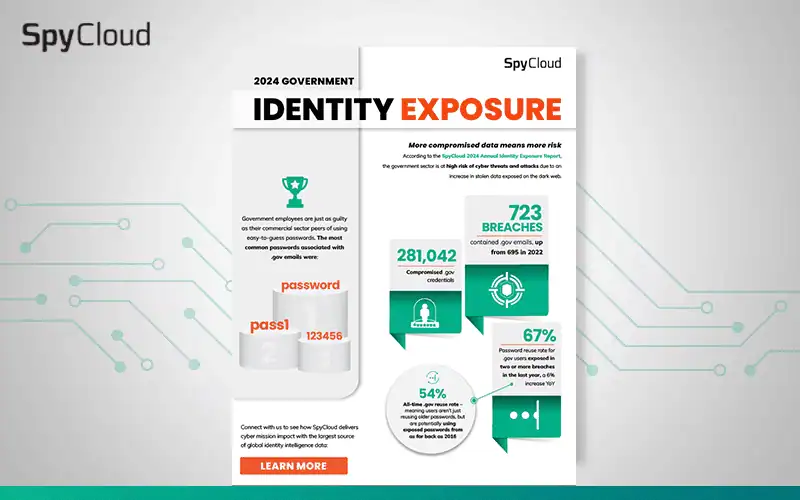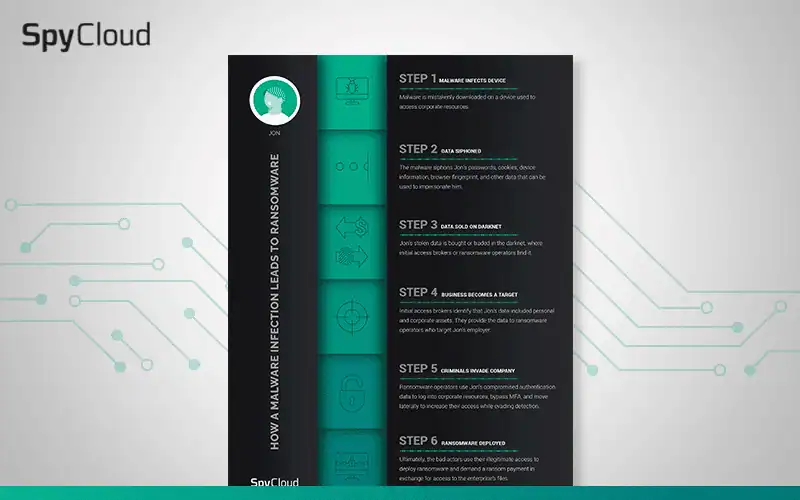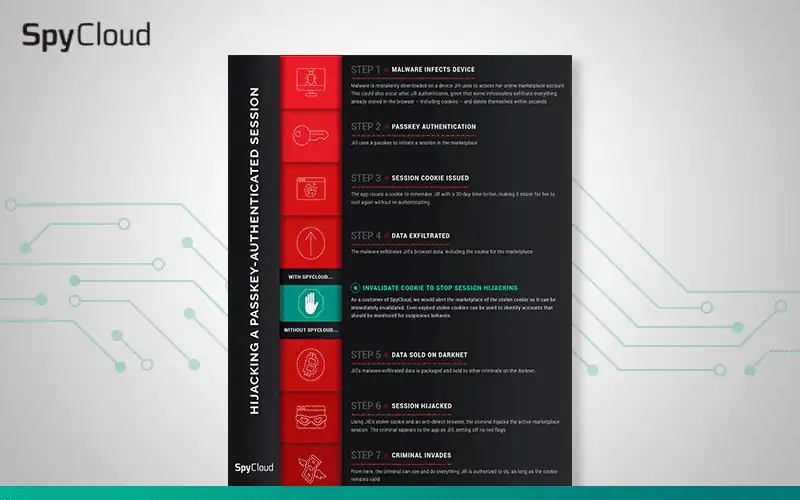SPYCLOUD RESOURCES
Insights from the criminal underground that help you get ahead of the latest threats
- Tools
Darknet Exposure Check
Identify threats to your organization including third-party breach exposures, malware-infected employees and consumers, password reuse, and more.
- Tools
Password Exposure Check
Test any password to see how many times it has appeared on the darknet, meaning it’s unsafe to use.
Preparing for the Inevitable: Strengthening Incident Response in a Rapidly Evolving Threat Landscape
- Video
Close Investigative Gaps Faster: SpyCloud Investigations with AI Insights
- Video
2025 SpyCloud Report: Holistic Identity Exposure Trends
Cybercriminals aren’t just stealing credentials anymore. Learn about the shift from user-centric attacks to the sophisticated identity-based attacks that take advantage of a broad & growing range of darknet exposures.
- Video
The Power of SpyCloud Investigations
See how you can leverage SpyCloud Investigations to build comprehensive cybercrime investigations and protect your enterprise from identity-based attacks stemming from your employees, customers, and suppliers’ darknet exposures.
- Video
Continuous Zero Trust with SpyCloud
Traditional Zero Trust policy engines only test the validity of users and devices when they first access the network, missing the vast amount of identity, device, and access information that criminals already have.
- Video
Reverse Engineering Atomic macOS Stealer
- Video
The Mother of All Breaches Data Leak
In this video, our team at SpyCloud Labs discusses the monumental “Mother of All Breaches” (MOAB) Data Leak that shook the security community. Watch to learn about the 26 billion record data leak, the extensive analysis by SpyCloud Labs, and highlights covering the intriguing findings.
- Video
360 Privacy | SpyCloud Customer Success Story
Hear how 360 Privacy leverages SpyCloud’s suite of holistic identity protection solutions to protect more than 1,800 individuals and their digital footprints – reducing risk from dark web exposures and protecting against targeted attacks.
- Video
Webinar: Access Granted: The reality of compromised credentials in a passwordless world
Explore the evolution of authentication and scrutinize common myths around passwordless technology.
- Video
Webinar: From Zero to Hero: What Your Security Team Can Unlock with Actionable Data
- Video
Webinar: C is for Cookie: The Missing Ingredient in your Zero Trust Recipe
Learn how to address a common Zero Trust implementation gap that is leaving organizations vulnerable to targeted attacks: users’ stolen session cookies.
- Video
Webinar: An Inside Look at Game-Changing Threats in 2024
In this webinar, we cover top trends from the SpyCloud 2024 Identity Exposure Report. Learn about the identity threats putting organizations everywhere at risk.
- Video
Webinar: Consumer or Criminal? An inside look at SpyCloud’s Consumer Risk Protection for Financial Services
This demo/webinar shows how SpyCloud helps financial organizations safeguard consumer digital identities and stop high-risk attacks tied to malware.
- Video
Webinar: Consumer or Criminal? An inside look at SpyCloud’s Consumer Risk Protection
This demo/webinar shows how SpyCloud helps eCommerce organizations safeguard consumer digital identities and stop high-risk attacks tied to malware.
- Video
Webinar: Preserving Account Integrity and Reducing ATO Risk
- Video
Webinar: Journey to the Underground: Insights Into What’s Fueling Ransomware in 2024
Blog
Case Studies
Tools
- Tools
Darknet Exposure Check
Identify threats to your organization including third-party breach exposures, malware-infected employees and consumers, password reuse, and more.
- Tools
Password Exposure Check
Test any password to see how many times it has appeared on the darknet, meaning it’s unsafe to use.
Guides
Research Reports
Whitepapers & Ebooks
Webinars
Preparing for the Inevitable: Strengthening Incident Response in a Rapidly Evolving Threat Landscape
Infographics
Videos
- Video
Close Investigative Gaps Faster: SpyCloud Investigations with AI Insights
SpyCloud Investigations with AI Insights synthesizes relationships and risk indicators across malware, phished, and breached data to generate finished intelligence for analysts in seconds.
- Video
2025 SpyCloud Report: Holistic Identity Exposure Trends
Cybercriminals aren’t just stealing credentials anymore. Learn about the shift from user-centric attacks to the sophisticated identity-based attacks that take advantage of a broad & growing range of darknet exposures.
- Video
The Power of SpyCloud Investigations
See how you can leverage SpyCloud Investigations to build comprehensive cybercrime investigations and protect your enterprise from identity-based attacks stemming from your employees, customers, and suppliers’ darknet exposures.
- Video
Continuous Zero Trust with SpyCloud
Traditional Zero Trust policy engines only test the validity of users and devices when they first access the network, missing the vast amount of identity, device, and access information that criminals already have.
- Video
Reverse Engineering Atomic macOS Stealer
- Video
The Mother of All Breaches Data Leak
In this video, our team at SpyCloud Labs discusses the monumental “Mother of All Breaches” (MOAB) Data Leak that shook the security community. Watch to learn about the 26 billion record data leak, the extensive analysis by SpyCloud Labs, and highlights covering the intriguing findings.
- Video
360 Privacy | SpyCloud Customer Success Story
Hear how 360 Privacy leverages SpyCloud’s suite of holistic identity protection solutions to protect more than 1,800 individuals and their digital footprints – reducing risk from dark web exposures and protecting against targeted attacks.
- Video
Webinar: Access Granted: The reality of compromised credentials in a passwordless world
Explore the evolution of authentication and scrutinize common myths around passwordless technology.
- Video
Webinar: From Zero to Hero: What Your Security Team Can Unlock with Actionable Data
- Video
Webinar: C is for Cookie: The Missing Ingredient in your Zero Trust Recipe
Learn how to address a common Zero Trust implementation gap that is leaving organizations vulnerable to targeted attacks: users’ stolen session cookies.
- Video
Webinar: An Inside Look at Game-Changing Threats in 2024
In this webinar, we cover top trends from the SpyCloud 2024 Identity Exposure Report. Learn about the identity threats putting organizations everywhere at risk.
- Video
Webinar: Consumer or Criminal? An inside look at SpyCloud’s Consumer Risk Protection for Financial Services
This demo/webinar shows how SpyCloud helps financial organizations safeguard consumer digital identities and stop high-risk attacks tied to malware.
- Video
Webinar: Consumer or Criminal? An inside look at SpyCloud’s Consumer Risk Protection
This demo/webinar shows how SpyCloud helps eCommerce organizations safeguard consumer digital identities and stop high-risk attacks tied to malware.
- Video
Webinar: Preserving Account Integrity and Reducing ATO Risk
- Video
